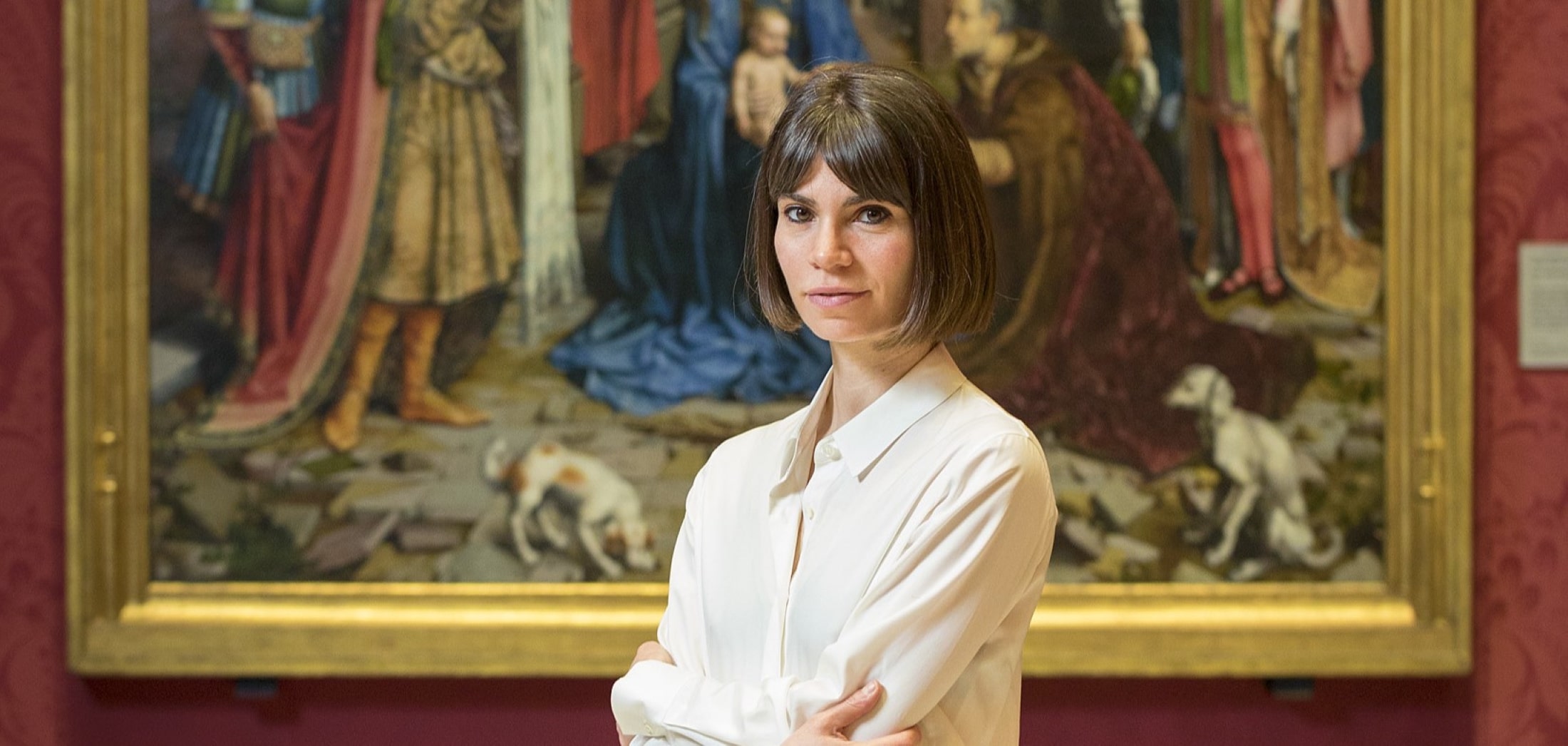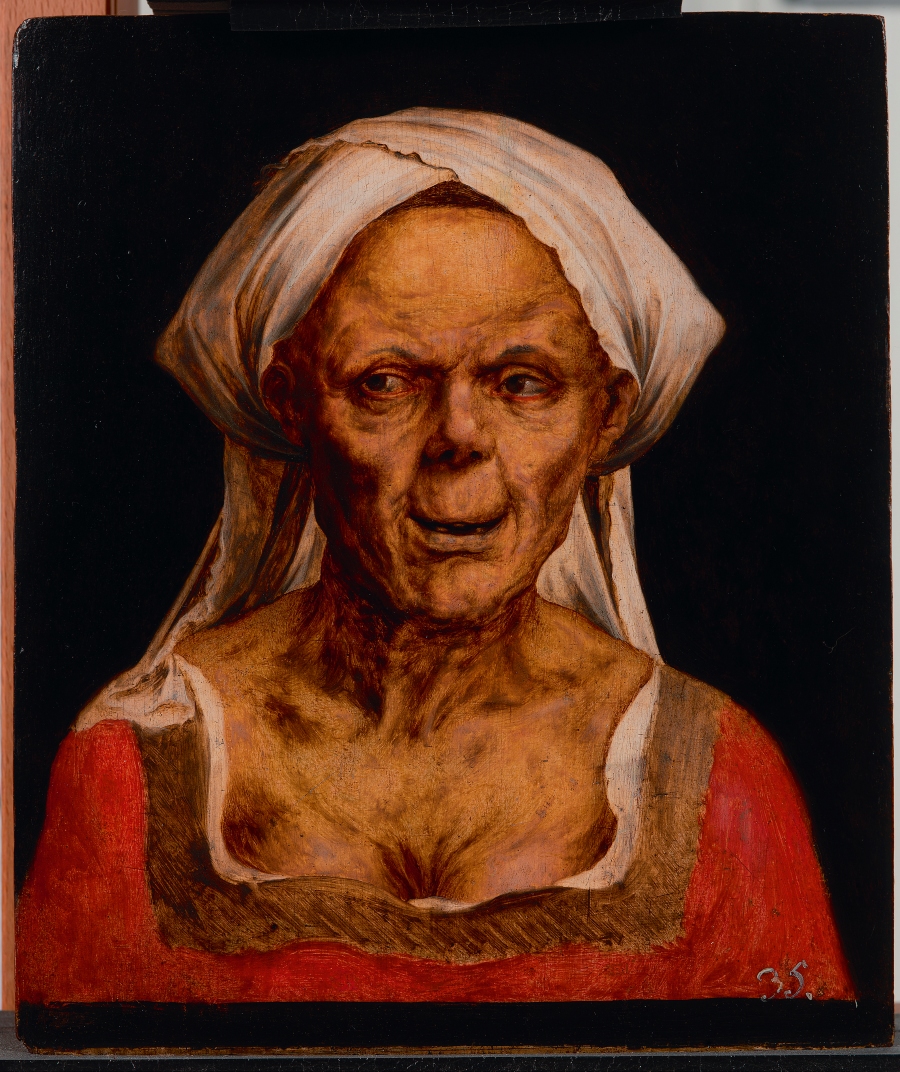
Emma Capron, curator at London’s National Gallery, on ‘The Ugly Duchess’
Running until June 11, an exhibition at London’s National Gallery invites viewers to reexamine the enigmatic 1513 artwork ‘An Old Woman’ by Flemish artist Quinten Massys.
Emma Capron, Associate Curator (Renaissance Painting) at the National Gallery, tells us about the importance of ‘An Old Woman’ in shedding light on the Renaissance perception of women, why it was important to reunite this work with 'An Old Man', and how the show leads us to question the currency still placed on women’s youth and appearance today.
Can you tell us how you came to specialise in Renaissance painting and how the idea for the exhibition, ‘The Ugly Duchess: Beauty and Satire in the Renaissance’, came about?
I fell in love with the Renaissance on a trip to Florence as an 18-year-old. After that there was no going back. Although I ended up specialising in Netherlandish rather than Italian art, I always stayed focused on this period of incredible intellectual vibrancy and artistic achievements.
Although we associate the Renaissance with timeless beauty, it’s also a period obsessed with it very opposite, as epitomised by Quinten Massys’s formidable ‘Old Woman’, better known as ‘The Ugly Duchess’. The idea for the exhibition was to shed new light on this familiar face. Despite being one of the National Gallery’s most famous paintings and an enduring visitors’ favourite, the painting has remained tied to the world of fairy tale after it inspired John Tenniel’s much-loved illustrations for Lewis Carroll’s Alice’s Adventures in Wonderland (1865). The exhibition aimed to move away from this and focus on the painting’s vibrant Renaissance context, foregrounding its status as a pioneering work of satirical painting. Another great ambition of the exhibition was to display, for the first time ever, ‘The Ugly Duchess’ along with the drawings of grotesque heads by Leonardo da Vinci.
 An Old Woman ('The Ugly Duchess'), Quinten Massys, about 1513. Oil on oak 62.4 × 45.5 cm. Bequeathed by Miss Jenny Louisa Roberta Blaker, 1947 © The National Gallery, London
An Old Woman ('The Ugly Duchess'), Quinten Massys, about 1513. Oil on oak 62.4 × 45.5 cm. Bequeathed by Miss Jenny Louisa Roberta Blaker, 1947 © The National Gallery, LondonWhat does Quinten Massys’ 1513 ‘An Old Woman’ (‘The Ugly Duchess’), one of the highlights of the show, tell us about how women were perceived in the Renaissance?
‘The Ugly Duchess’ reveals the deeply ambivalent views cast on women, age, and normative beauty during the Renaissance. It shows us an old woman with exaggerated features – snub nose, toothless mouth, wrinkled skin, hairy mole – clad in a flamboyant and provocative outfit. She brazenly departs from all the ideals of beauty, youth and propriety then expected from her gender. Viewers are invited to laugh at her pretension and self-delusion, with the message that past a certain age, a woman’s desire to seduce is indecorous and ridicule.
Beyond the obvious misogyny however, I think there is something radical and exciting about The Ugly Duchess’s rule-breaking: as viewers, we experience an undeniable joy in beholding her trample beauty standards, social conventions, and gender expectations. We laugh at her, but perhaps also with her, at all the norms she contravenes. The image’s enduring power perhaps lies in this freedom and irreverence.
 An Old woman, Quinten Massys, about 1514-24. Oil on panel 29.2 × 25 cm © The Phoebus Foundation, Antwerp
An Old woman, Quinten Massys, about 1514-24. Oil on panel 29.2 × 25 cm © The Phoebus Foundation, AntwerpWhat makes this work stand out from other works created during this period? Are there any metaphors or symbols, such as the flower she is holding in her hand, that you can tell us about?
It is hard to overstate how novel this work would have been at the time when it was created, during the second decade of the sixteenth century. Humorous subjects were ubiquitous throughout the Middle Ages, but they remained confined to the sidelines of representations, such as the margins of manuscripts. In secular painting, ‘The Ugly Duchess’ provides one of the earliest surviving examples of the grotesque taking centre stage on such an imposing scale and with such refined execution.
Several clues allow us to make sense of the woman’s appearance and gesture. Her horned headdress, for instance, would have been very old-fashioned by the 1510s, hinting at her age and making her an object of ridicule. Such headgear had also become by that time an iconographic shorthand for female vanity and evil – the horns of such headdresses were frequently compared to those of the devil. The woman holds a droopy rosebud, mimicking engagement portraits in which sitters were commonly shown holding carnations as symbols of marital fidelity. By contrast, roses like the old woman’s had sexual connotations, hinting at her lustful intent.
